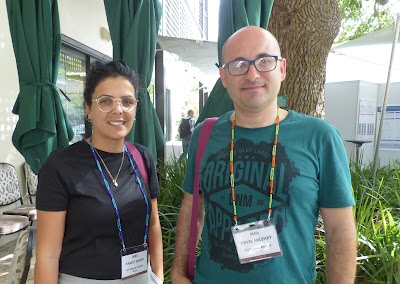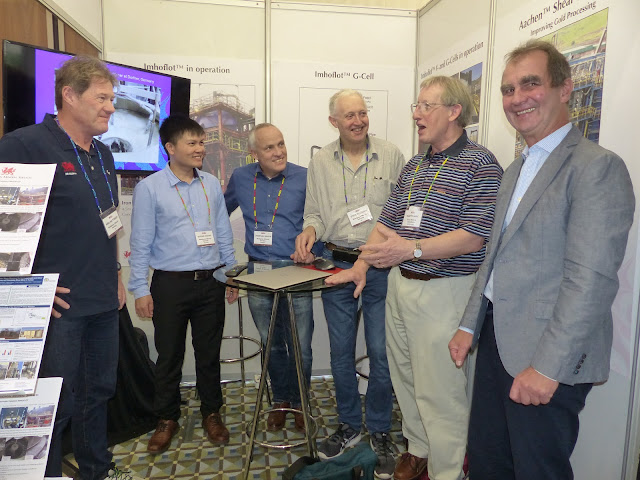Barbara and I are now back in Cape Town after a wonderful few days in Zimbabwe's Matabeleland, impressed as ever by the friendliness of the people, despite the country's economic woes, which were certainly not evident at Victoria Falls, the country's premier tourist destination.
Our last two days were spent relaxing at the Victoria Falls Safari Lodge, which has a unique way of disposing of kitchen and restaurant left-overs and carcasses, by feeding them to hundreds of vultures each day. It's an amazing sight to see these raptors, which have been waiting patiently in nearby trees, swoop in and push and jostle with each other as they tear at the bloody pieces. Within 10 minutes it is all over, the birds disperse leaving only the bones, which are disposed of during the night by the hyenas.
 |
| The vultures arrive for lunch |
 |
| Joined by Marabou Storks |
 |
| For a feeding frenzy |
Wild Africa's contribution to the circular economy is just one of the many reasons to visit Southern Africa's jewel in the crown. Apart from the magnificent waterfall, which we did not visit this time, the area teems with wildlife and is host to the 'Big Five': black rhino, lion, elephant, leopard and buffalo, originally named by big game hunters as the most difficult and dangerous to hunt on foot. Just before nightfall we were lucky to spot one of the most elusive and endangered of the Big Five, a black rhino with her calf, thanks to our expert tracker and guide, Charlie.
 |
| Bush braai with Charlie (right) and his trainee guides |
You never know who you are going to bump into when travelling, and this time it was the IMPC's Robin Batterham, and his partner Anna, off on an excursion to the falls.
We travelled to Victoria Falls from Pretoria on the luxurious Rovos train, a fabulous three day journey which impressed us so much that I will publish a travelogue in a week or so, as some of next year's conference delegates might be interested in doing something similar.
The long journey back to Cornwall starts tomorrow, and we are already thinking ahead to next year in Cape Town.
In February we will be at the Convention Centre for Mining Indaba 2020, then a couple of months later back for Comminution '20 at the Vineyard.
In October we will be back at the Vineyard for Hi-Tech Metals '20 and Process Mineralogy '20, and then on to the Convention Centre for IMPC 2020.
We look forward to seeing many of you in South Africa's Mother City.





























































-EDIT.jpg)




